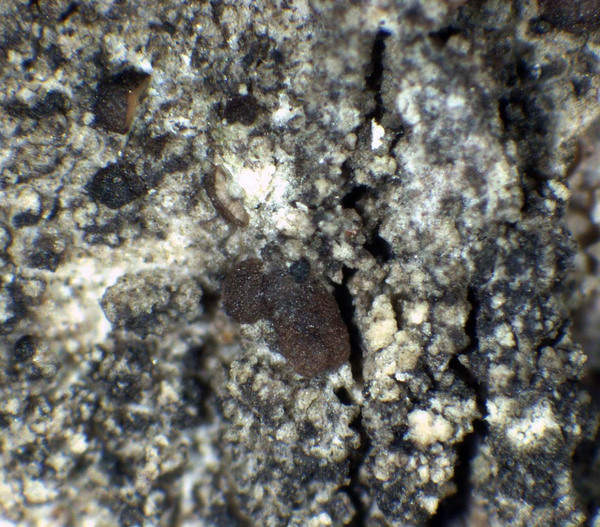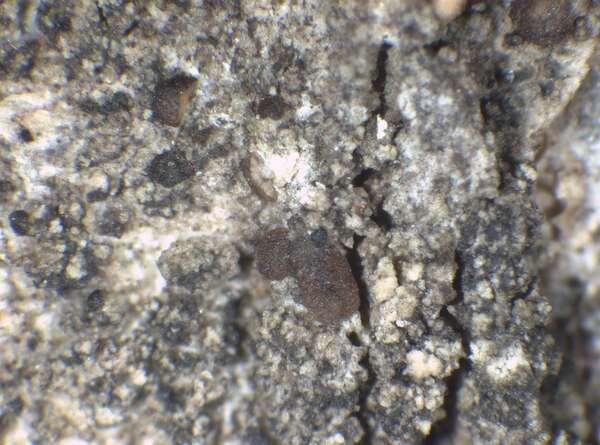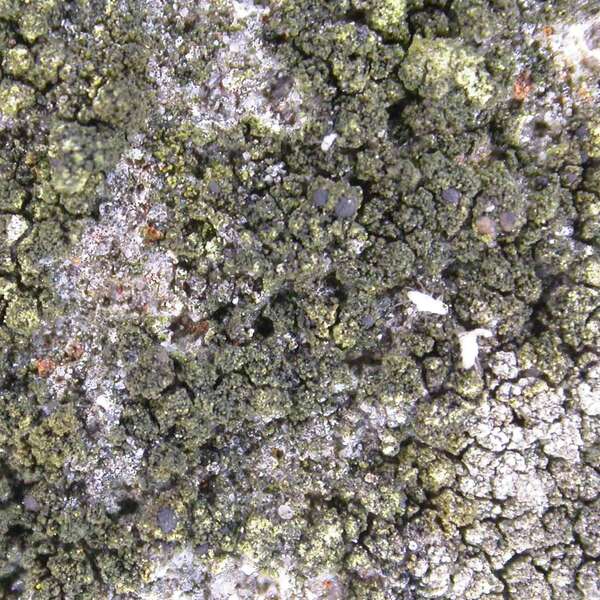Scoliciosporum sarothamni (Vain.) Vězda
Folia Geobot. Phytotaxon., 13: 411, 1978. Basionym: Bacidia sarothamni Vain. - Acta Soc. Fauna Fl. Fenn., 53: 214, 1922.
Synonyms:
Distribution: N - Frl (TSB 2908), Ven (Nascimbene 2003b, Thor & Nascimbene 2007, Nascimbene & Marini 2007). Emil (Fariselli & al. 2020). C - Tosc (Loppi & al. 1994, Loppi & Putortì 2001, Benesperi & al. 2007), Marc (Nimis & Tretiach 1999), Umb (Ravera & al. 2006, 2006b), Abr (Nimis & Tretiach 1999).
Description: Thallus crustose, thinly episubstratic, yellowish grey to grey-green, continuous or more or less granular-warted, forming up to 1(-2) cm wide, orbicular to ellipsoid patches, sorediate, without a distinct prothallus. Soralia yellowish green, partly discrete, punctiform and up to 0.2 mm in diam., partly confluent and convex; soredia farinose, up to 20(-25) μm in diam. Apothecia very rare, biatorine, 0.15-0.3 mm across, pale brown to black, greenish in shade forms, sessile, with a flat to convex disc, soon immarginate. Epithecium more or less blue-green (K-, N+ purple), olive-brown (K-, N-), or a mixture of both; hymenium colourless, 40-55 μm high; paraphyses 1.5-2 μm thick at mid-level, much branched and anastomosing, the apical cells more or less clavate, up to 3 μm wide; hypothecium colourless. Asci 8-spored, broadly clavate, surrounded by a gelatinous, amyloid sheet, with a well-developed, amyloid tholus containing a widely cylindrical axial body and a poorly developed, bluntly conical ocular chamber, more or less Lecanora-type, with spirally arranged spores. Ascospores 3-7-septate, strongly curved and mostly S-shaped, (20-)25-35(-40) x 2-3(-3.5) μm. Photobiont chlorococcoid. Spot tests: soralia K-, C+ fleeting and faintly pink, KC+ fleeting and faintly pink (reactions often visible only in squash preparations!), P-, UV-. Chemistry: gyrophoric acid (traces).Note: a mainly mild-temperate early coloniser of smooth bark, rarely occurring also on siliceous rocks and on leaves of Buxus and Abies. Probably overlooked, being mostly sterile, it was included in the Italian red list of epiphytic lichens under the “Least Concern” category (Nascimbene & al. 2013c).
Growth form: Crustose
Substrata: bark and rocks
Photobiont: green algae other than Trentepohlia
Reproductive strategy: mainly asexual, by soredia, or soredia-like structures (e.g. blastidia)
Pioneer species
Commonnes-rarity: (info)
Alpine belt: absent
Subalpine belt: absent
Oromediterranean belt: absent
Montane belt: very rare
Submediterranean belt: extremely rare
Padanian area: absent
Humid submediterranean belt: very rare
Humid mediterranean belt: absent
Dry mediterranean belt: absent
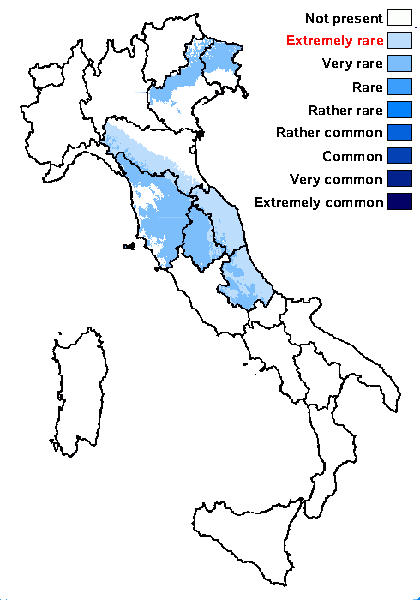
Predictive model
Herbarium samples

Courtesy Danièle et Olivier Gonnet - Source: https://www.afl-lichenologie.fr/Photos_AFL/Photos_AFL_S/Text_S/Scoliciosporum_sarothamni.htm
France, 16/5/2018 - Poleymieux-au-Mont-d’Or - Rhone - (69) - sur écorce de frêne

Courtesy Danièle et Olivier Gonnet - Source: https://www.afl-lichenologie.fr/Photos_AFL/Photos_AFL_S/Text_S/Scoliciosporum_sarothamni.htm
France, 16/5/2018 - Poleymieux-au-Mont-d’Or - Rhone - (69) - sur écorce de frêne
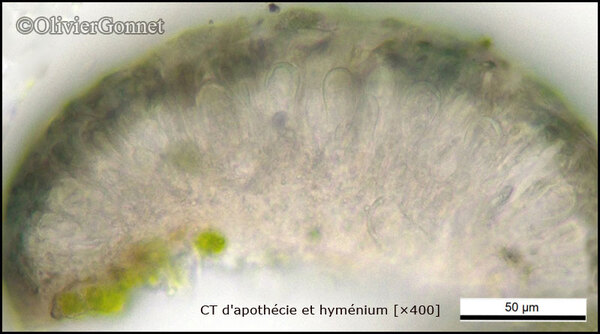
Courtesy Danièle et Olivier Gonnet - Source: https://www.afl-lichenologie.fr/Photos_AFL/Photos_AFL_S/Text_S/Scoliciosporum_sarothamni.htm
France, 16/5/2018 - Poleymieux-au-Mont-d’Or - Rhone - (69) - sur écorce de frêne
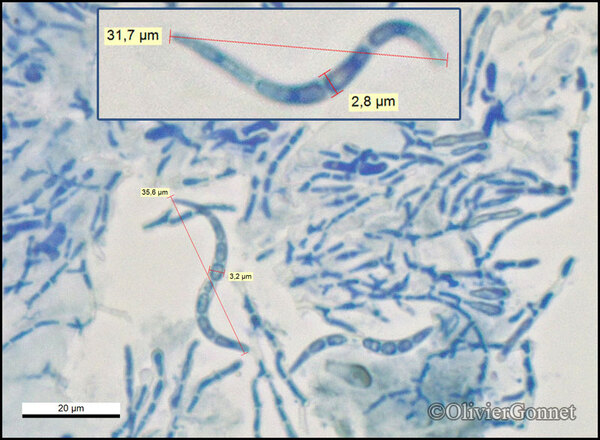
Courtesy Danièle et Olivier Gonnet - Source: https://www.afl-lichenologie.fr/Photos_AFL/Photos_AFL_S/Text_S/Scoliciosporum_sarothamni.htm
France, 16/5/2018 - Poleymieux-au-Mont-d’Or - Rhone - (69) - sur écorce de frêne
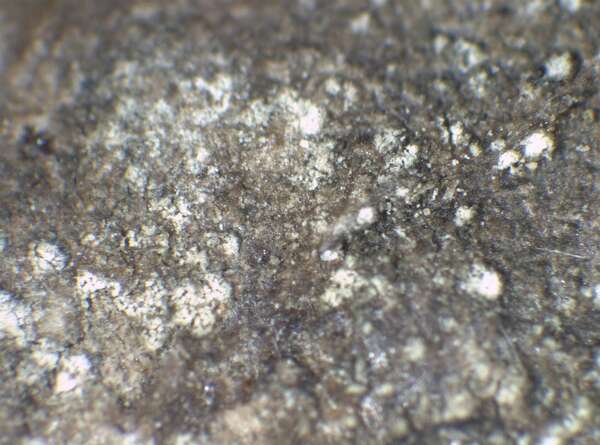

P.L. Nimis; Owner: Department of Life Sciences, University of Trieste
Herbarium: TSB (23880)
2003/03/17
sterile, sorediate thallus
Growth form: Crustose
Substrata: bark and rocks
Photobiont: green algae other than Trentepohlia
Reproductive strategy: mainly asexual, by soredia, or soredia-like structures (e.g. blastidia)
Pioneer species
Commonnes-rarity: (info)
Alpine belt: absent
Subalpine belt: absent
Oromediterranean belt: absent
Montane belt: very rare
Submediterranean belt: extremely rare
Padanian area: absent
Humid submediterranean belt: very rare
Humid mediterranean belt: absent
Dry mediterranean belt: absent

Predictive model
| Herbarium samples |

Courtesy Danièle et Olivier Gonnet - Source: https://www.afl-lichenologie.fr/Photos_AFL/Photos_AFL_S/Text_S/Scoliciosporum_sarothamni.htm
France, 16/5/2018 - Poleymieux-au-Mont-d’Or - Rhone - (69) - sur écorce de frêne

Courtesy Danièle et Olivier Gonnet - Source: https://www.afl-lichenologie.fr/Photos_AFL/Photos_AFL_S/Text_S/Scoliciosporum_sarothamni.htm
France, 16/5/2018 - Poleymieux-au-Mont-d’Or - Rhone - (69) - sur écorce de frêne

Courtesy Danièle et Olivier Gonnet - Source: https://www.afl-lichenologie.fr/Photos_AFL/Photos_AFL_S/Text_S/Scoliciosporum_sarothamni.htm
France, 16/5/2018 - Poleymieux-au-Mont-d’Or - Rhone - (69) - sur écorce de frêne

Courtesy Danièle et Olivier Gonnet - Source: https://www.afl-lichenologie.fr/Photos_AFL/Photos_AFL_S/Text_S/Scoliciosporum_sarothamni.htm
France, 16/5/2018 - Poleymieux-au-Mont-d’Or - Rhone - (69) - sur écorce de frêne


 INDEX FUNGORUM
INDEX FUNGORUM
 GBIF
GBIF
 DOLICHENS
DOLICHENS
